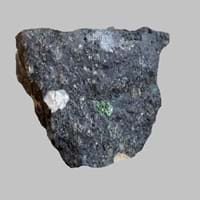Definition
Lignite is a soft brownish coal which shows traces of plants and is intermediate between bituminous coal and peat
Kimberlite is a rare, blue-tinged, coarse-grained intrusive igneous rock, which sometimes contains diamonds and is mostly found in South Africa and Siberia.
Origin
France
Kimberley, South Africa
Discoverer
Unknown
Unknown
Etymology
From French, Latin lignum wood + -ite1
From Kimberley + -ite, from the name of the South African town of Kimberley where the rock was first found.
Class
Sedimentary Rocks
Igneous Rocks
Sub-Class
Durable Rock, Soft Rock
Durable Rock, Hard Rock
Group
Not Applicable
Volcanic
Other Categories
Coarse Grained Rock, Fine Grained Rock, Medium Grained Rock, Opaque Rock
Coarse Grained Rock, Fine Grained Rock, Opaque Rock
Texture
Amorphous, Glassy
Porphyritic
Color
Black, Brown, Dark Brown, Grey, Light to Dark Grey
Black, Bluish - Grey, Brown, Dark Greenish - Grey, Green, Grey
Durability
Durable
Durable
Appearance
Veined or Pebbled
Dull and Banded
Interior Uses
Not Yet Used
Countertops, Decorative Aggregates, Homes, Interior Decoration
Exterior Uses
Not Yet Used
As Building Stone, Paving Stone, Garden Decoration
Other Architectural Uses
Not Yet Used
Curbing
Construction Industry
for Road Aggregate, Steel Production
As a Flux in the Production of Steel and Pig Iron, As a Sintering Agent in Steel Industry to process Iron Ore, As Dimension Stone, Cement Manufacture, for Road Aggregate, Making natural cement, Manufacture of Magnesium and Dolomite Refractories
Medical Industry
Not Yet Used
Taken as a Supplement for Calcium or Magnesium
Antiquity Uses
Not Yet Used
Artifacts, Monuments, Sculpture, Small Figurines
Commercial Uses
Electricity Generation
An Oil and Gas Reservoir, As a Feed Additive for Livestock, Gemstone, Metallurgical Flux, Production of Lime, Soil Conditioner, Source of Magnesia (MgO)
Types
Xyloid Lignite or Fossil Wood and Compact Lignite or Perfect Lignite
Basaltic Kimberlites and Micaceous Kimberlites
Features
Generally rough to touch, Helps in production of Heat and Electricity, Used as fossil fuel
Always found as volcanic pipes over deep continental crust, Host rock for Diamond, Is one of the oldest rock, Surfaces are often shiny
Archaeological Significance
Monuments
Not Yet Used
Used
Famous Monuments
Not Applicable
Data Not Available
Sculpture
Not Yet Used
Used
Famous Sculptures
Not Applicable
Data Not Available
Pictographs
Used
Not Used
Petroglyphs
Used
Not Used
Figurines
Not Yet Used
Used
Formation
Coal formation takes place due to accumulation of plant debris in a swamp environment. The Coal formation process continues, as peat turns into lignite brown or black coal at increasing heat and pressure.
Kimberlite is an igneous rock and is the main source of diamonds. Its formation takes place deep beneath the Earth’s surface between 150 to 450 kilometres, and are erupted rapidly and violently.
Mineral Content
Not Available
Garnet, Olivine, Phlogopite, Pyroxene
Compound Content
Carbon, Hydrogen, Nitrogen, Oxygen, Sulphur
Aluminium Oxide, NaCl, CaO, Iron(III) Oxide, FeO, Potassium Oxide, MgO, MnO, Sodium Oxide, Silicon Dioxide, Titanium Dioxide
Types of Metamorphism
Not Applicable
Burial Metamorphism, Cataclastic Metamorphism, Contact Metamorphism, Hydrothermal Metamorphism, Impact Metamorphism, Regional Metamorphism
Types of Weathering
Biological Weathering, Chemical Weathering, Mechanical Weathering
Biological Weathering, Chemical Weathering, Mechanical Weathering
Types of Erosion
Chemical Erosion, Water Erosion, Wind Erosion
Chemical Erosion, Coastal Erosion, Glacier Erosion, Sea Erosion, Water Erosion, Wind Erosion
Grain Size
Medium to Fine Coarse Grained
Fine to Coarse Grained
Fracture
Conchoidal
Conchoidal
Porosity
Highly Porous
Very Less Porous
Luster
Dull to Vitreous to Submetallic
Subvitreous to Dull
Cleavage
Non-Existent
Conchoidal
Toughness
Not Available
Not Available
Specific Gravity
1.1-1.4
2.86-2.87
Transparency
Opaque
Translucent to Opaque
Density
800-801 g/cm3
2.95-2.96 g/cm3
Resistance
Heat Resistant
Heat Resistant, Impact Resistant
Deposits in Eastern Continents
Asia
Bangladesh, Burma, Cambodia, China, India, Indonesia, Kazakhstan, Malaysia, Mongolia, Pakistan, Turkey, Vietnam
Russia
Africa
Botswana, Kenya, Morocco, Mozambique, South Africa, Tanzania
Angola, Botswana, Cameroon, Ethiopia, South Africa
Europe
Belgium, Bulgaria, England, France, Germany, Greece, Hungary, Kosovo, Netherlands, Norway, Poland, Romania, Serbia, Slovakia, Slovenia, The Czech Republic, Ukraine, United Kingdom
England, Hungary, Iceland, United Kingdom
Others
Not Yet Found
Antarctica
Deposits in Western Continents
North America
Canada, Mexico, USA
Canada, USA
South America
Brazil, Chile, Colombia, Venezuela
Argentina, Colombia, Ecuador
Deposits in Oceania Continent
Australia
New South Wales, Queensland, Victoria
New South Wales, New Zealand, South Australia, Western Australia










